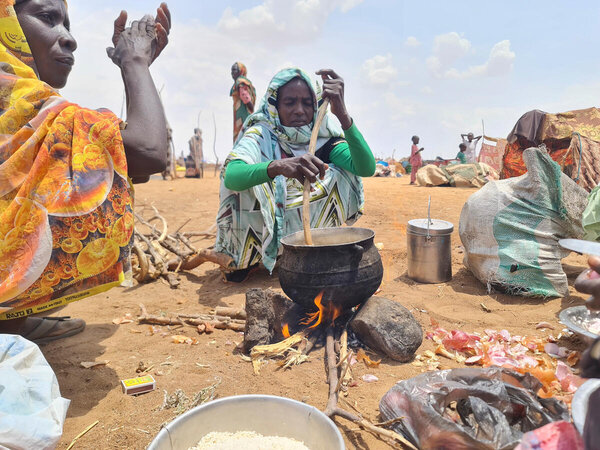PORT SUDAN, Sudan - One year since famine was first confirmed in Sudan's Zamzam camp in North Darfur, the UN World Food Programme (WFP) warns that the families trapped inside the besieged state capital, El Fasher, face starvation. The city is cut off from humanitarian access leaving the remaining population with little choice but to fend for survival with whatever limited supplies are left.
WFP has not been able to deliver food assistance to El Fasher by road for over a year as all roads leading there are blocked. WFP continues to provide digital cash support to 250,000 people in the city, with which they can purchase whatever food they can still find in the markets, but this falls far short of the massive needs in the besieged city.
"Everyone in El Fasher is facing a daily struggle to survive," said Eric Perdison, WFP's Regional Director for Eastern and Southern Africa. "People's coping mechanisms have been completely exhausted by over two years of war. Without immediate and sustained access, lives will be lost."
With trade routes cut off and supply lines blocked, basic food items like sorghum or wheat, which are used to make traditional flatbreads and porridges, cost up to 460 percent more in El Fasher than in the rest of Sudan. Community kitchens were set up by local groups during the war to provide hot meals to hungry people, but only very few are still functioning. Civilian infrastructure - including markets and clinics - have been attacked. Reports indicate that some families are resorting to consuming animal fodder and food waste for survival. Many who have managed to flee have cited an escalation of rampant violence, looting, and sexual assault.
"In El Fasher there was a lot of shelling and hunger. Only hunger and bombs. That's why we left El Fasher," eight-year-old Sondos told WFP. Sondos fled El Fasher with her five family members who had been surviving on only millet. She is among some 400,000 people recently displaced to Tawila who are receiving WFP support.
Across Sudan, WFP is reaching over four million people each month - with 5.5 million reached in May alone, in the most food insecure and hardest hit areas of the country. This includes nearly 1.7 million people - 80% of the food insecure people in locations confirmed as famine or considered at risk of famine - and over 600,000 women and children supported with nutritional supplements.
WFP assistance has helped reduce the risk of famine in six areas of Central Darfur and two in West Darfur. But, with the rainy season underway, road access to Darfur will soon be cut off. Fragile gains risk being reversed if assistance is interrupted.
"We have made progress under the most difficult conditions," said Corinne Fleischer, WFP's Director of Supply Chain and Delivery. "But access is still blocked to key locations like El Fasher. We must be given the space to reach all civilians in need."
As of 01 August, WFP has received clearances from Sudan's Humanitarian Aid Commission (HAC) in Port Sudan for a convoy of humanitarian assistance to proceed to El Fasher. The Rapid Support Forces, who have held the North Darfur capital under siege for over a year, is yet to communicate support for a pause in the fighting to allow humanitarian goods to move into the city.
"WFP is ready with trucks full of food assistance to send into El Fasher," said Fleischer. "We urgently need guarantees of safe passage."
A joint WFP and UNICEF convoy carrying food and nutrition supplies for El Fasher was attacked in June - five people were killed, and aid supplies destroyed.
WFP requires $645 million over the next six months to continue emergency food, cash, and nutrition assistance. Pipeline breaks are already forcing painful trade-offs. Some families in displacement camps in eastern Sudan who have relied on WFP support over two years are now receiving nothing.







